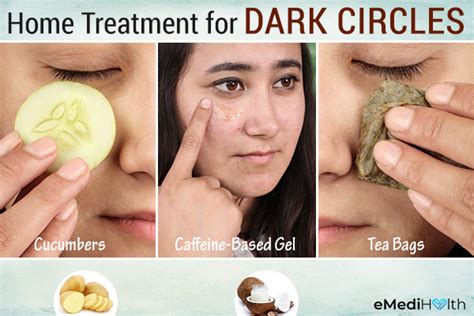How To Get Rid Of Dark Circles Under Your Eyes: A Comprehensive Guide
Dark circles under the eyes are a common cosmetic concern affecting many people. While genetics play a role, lifestyle factors and environmental influences often contribute to their appearance. Thankfully, numerous effective strategies can help reduce their prominence and even eliminate them completely. This comprehensive guide explores various methods, from home remedies to professional treatments, helping you choose the best approach for your needs.
Understanding the Causes of Dark Circles
Before diving into solutions, understanding the root cause of your dark circles is crucial. Several factors can contribute:
- Genetics: Inherited skin pigmentation can predispose some individuals to darker under-eye circles. Thinner skin in this area can also exacerbate the issue, making underlying blood vessels more visible.
- Lack of Sleep: Sleep deprivation leads to increased prominence of blood vessels, resulting in a darker appearance.
- Dehydration: Insufficient water intake can make the skin appear dull and dry, accentuating dark circles.
- Allergies: Allergic reactions often cause inflammation and swelling around the eyes, contributing to dark circles.
- Age: As we age, the skin thins, and collagen production decreases, making blood vessels more noticeable.
- Sun Exposure: UV rays damage the skin, leading to hyperpigmentation and darkening of the under-eye area.
- Iron Deficiency: Anemia, caused by iron deficiency, can manifest as dark circles.
- Smoking: Smoking constricts blood vessels, reducing blood flow and potentially worsening dark circles.
Effective Home Remedies for Dark Circles
Many home remedies can effectively lighten dark circles and improve the overall appearance of the under-eye area. Remember consistency is key!
1. Cold Compresses:
Applying a cold compress (e.g., a cool, damp washcloth) for 10-15 minutes can constrict blood vessels, reducing puffiness and darkening.
2. Cucumber Slices:
The cooling effect of cucumber slices, combined with their potential anti-inflammatory properties, can soothe the under-eye area and reduce dark circles.
3. Tea Bags:
Used tea bags (especially green tea or chamomile) contain antioxidants that may help reduce inflammation and improve skin tone. Cool the bags before applying them to the under-eye area.
4. Aloe Vera:
Aloe vera gel's soothing and anti-inflammatory properties can help reduce puffiness and improve skin tone. Apply a small amount gently to the affected area.
Lifestyle Changes for Brighter Under-Eyes
Lifestyle modifications can significantly impact the appearance of dark circles. Consider these changes:
- Prioritize Sleep: Aim for 7-8 hours of quality sleep per night.
- Stay Hydrated: Drink plenty of water throughout the day to keep your skin hydrated and healthy.
- Manage Allergies: If allergies are a contributing factor, consult an allergist to manage symptoms effectively.
- Protect Your Skin from the Sun: Wear sunglasses and use sunscreen with an SPF of 30 or higher to protect the delicate under-eye skin from sun damage.
- Maintain a Healthy Diet: A balanced diet rich in fruits, vegetables, and iron can contribute to healthy skin.
- Quit Smoking: Smoking can negatively impact skin health, so quitting is beneficial for overall well-being and reducing dark circles.
Professional Treatments for Dark Circles
If home remedies and lifestyle changes don't provide sufficient improvement, several professional treatments can address dark circles:
- Chemical Peels: These can help improve skin tone and texture, reducing the appearance of dark circles.
- Microdermabrasion: This exfoliating treatment can remove dead skin cells, revealing brighter, healthier skin.
- Laser Treatments: Certain laser therapies can target hyperpigmentation and improve skin tone.
- Fillers: Dermal fillers can help plump the under-eye area, reducing the appearance of hollowness and dark circles.
Choosing the Right Approach
The best approach depends on the underlying cause and severity of your dark circles. Start with simple home remedies and lifestyle changes. If these don't yield satisfactory results, consult a dermatologist or aesthetician to discuss professional treatments. They can assess your individual needs and recommend the most effective solution. Remember patience and consistency are crucial for achieving optimal results.
